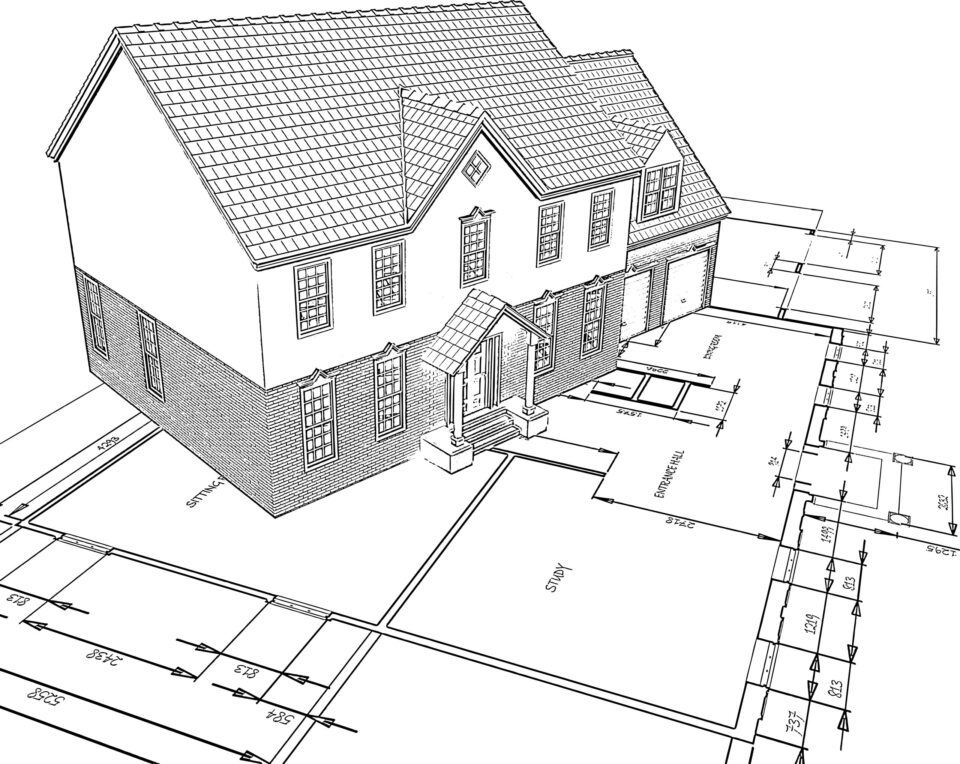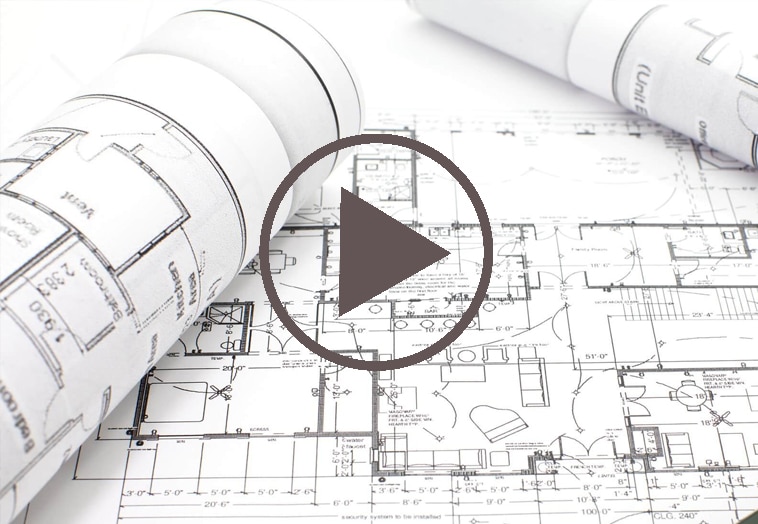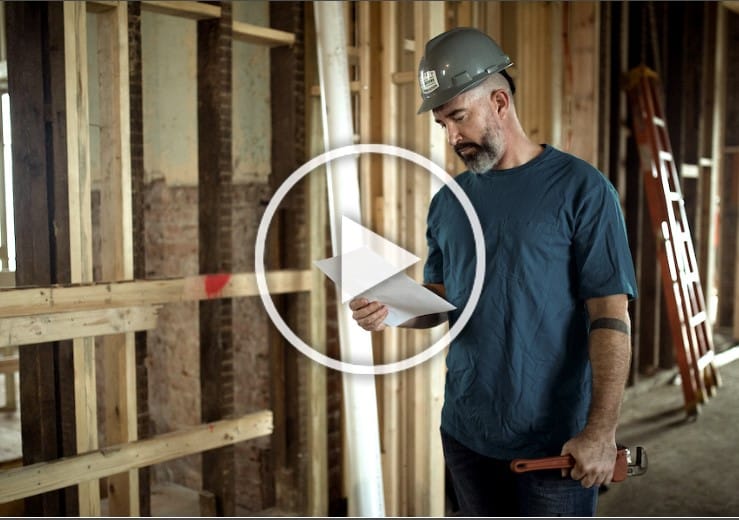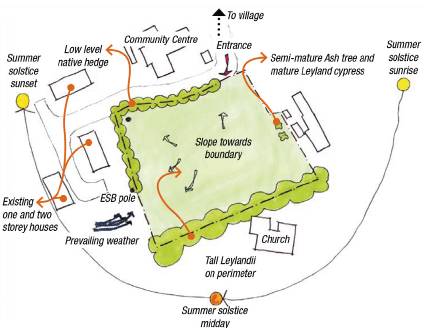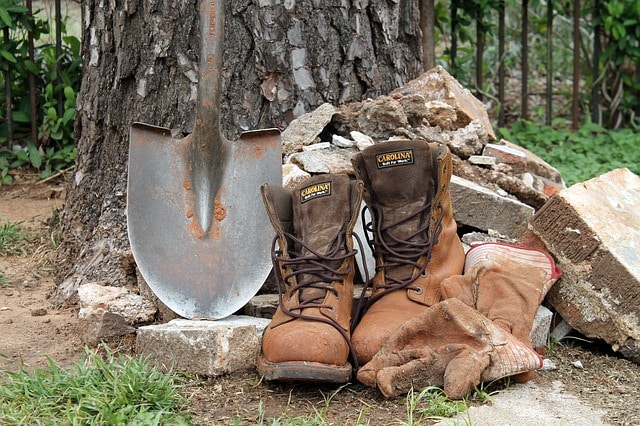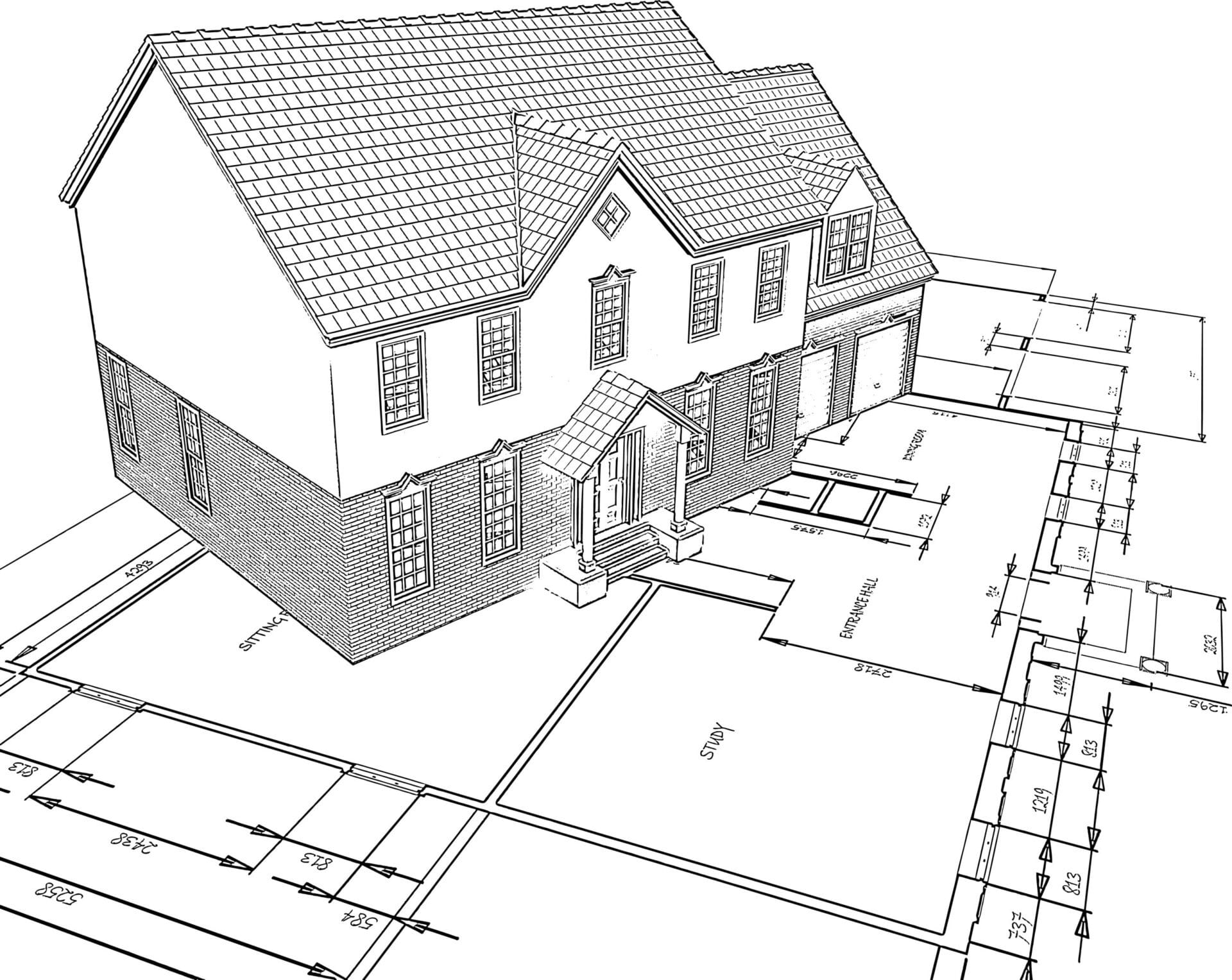[adrotate banner=”48″]
In this article we cover:
- Whether to pick a site that already has planning permission
- Applying for planning permission without owning the site
- Site suitability assessments
- What the planners have to say about building a house in the back garden
- How to assess a site to determine if it might get planning permission for a new house
- What goes into an application for full planning permission
- What are the key stages in the planning application for a new build or extension that require planning
- How to appeal a decision, how to appeal conditions in the decision
- What the costs of applying for planning permission are
- Pros and cons of applying for outline planning permission
- Where to get advice
- Can you submit any type of house design
- Who can object and how this can affect your application
- How the local authority makes their decision to grant or deny your application
- Changing the design of the house after planning has been granted
- Selling the house once built
- Where to find impartial advice for your project
I’m shopping around for a site. Should I only consider ones that have already been granted planning permission?
ROI: Estate agents sell sites with and without planning permission; those without can be cheaper, but the planning process is time-consuming, expensive and risky. With planning permission you can begin building immediately, though not to your design. Rural sites with planning permission have fewer advantages, as they are normally only available to another person who meets strict rural housing policy.
Some avoid all this by purchasing an existing property, demolishing (wholly or partly) the house and replacing it with their design. But this will be costly and planning permission still required – even for the demolition. For those considering this, you should seek the opinion of the planning department.
NI: As with ROI, it is possible to buy sites with or without planning permission. However, be wary of buying a site without permission as you are effectively buying land and not a site, which may be suitable only for keeping a few chickens! Take expert advice early on as to whether permission is likely to be granted.
Rural sites which have permission are normally transferable to another party, as the permission goes with the land and not the person. Watch that the permission is not going to expire before you can complete the transaction and commence building works. You also need to ensure that the site has been approved for a dwelling of the size and type which you desire, or that you can amend this to suit your needs.
I am thinking of buying a plot of land but I don’t own it yet. Can I apply for planning permission on it?
ROI: If your heart is set on a rural location, those offering such sites for sale may agree to a deal involving purchase in the event of a grant of planning permission. In an urban area, such a deal is more difficult as there are more buyers, but it is possible. To make a planning application it is only necessary to have the permission of the owner of the property and to give his/her name and address.
NI: The same applies, here notice must be served upon the landowner.
In what circumstances do I need to have someone assess a site for suitability?
ROI and NI: The question you need to ask yourself with regards to your site is whether it’s suitable in principle for a house.
The main planning issues facing urban sites are: (i) Is the site accessible by car? (ii) Is it big enough to fit a house and provide areas for parking and for private open space – a garden? Councils maintain minimum garden depth and size standards which vary, but the minimum garden depth is normally 7 to 11m and minimum garden size around 50-60sqm (if the site is being subdivided from another, then the existing site must also remain large enough); and (iii) Can a design and layout be achieved which does not unduly impact on the amenity of neighbouring properties (this may cause your proposed dwelling to be single storey only).
In rural areas you need to consider: (i) Whether your site can be accessed safely by road (sightlines); (ii) Can the site can be serviced by an on-site wastewater treatment system? (a Site Suitability Tester is required); and (iii) Is the site able to absorb a house without it having a significant visual impact on the area.
I have a large back garden. Can I build a new house in it?
ROI and NI: Applying the above criteria, consider whether it is going to be possible to access your back garden. Many back gardens in urban areas are large but inaccessible. Take a standard road of detached houses. The properties may have space for a laneway to the side of their house or they may demolish a garage to provide access to the rear of approx. 3.1-3.5m wide.
Then, is the rear garden sufficiently long to provide for a separate property with its own parking area, a dwelling and a rear garden? All the while leaving the existing property with sufficient rear garden area (of around 60sqm) to provide for a setback between dwellings of around 15m? Finally, if the property adjoins rear gardens on both sides, the proposed dwelling would need to be single storey to minimise impacts on adjoining properties, but those impacts (visual, overshadowing, noise, etc.) may still be considered excessive.
A nearby farmer has offered to sell me part of a field. Can I build a house on it?
ROI: Obtaining planning permission for a rural house is difficult. If this is your dream, before you spend any money, ask yourself: (i) Am I trying to build my first home (if you own one or have received planning permission previously, the Land Registry and/or tax records can be checked) (ii) Am I or my partner from this rural area / living in this area for 10 years? (iii) Are any of my family or my partner’s family? And (iv) Do I need to live here for work? If you answered “no” to each of these points, then you are very unlikely to obtain planning permission. If you answered yes to all the above questions and are intending to make a planning application, then you may be able to obtain planning permission.
That said, in response to an EU query the Department of Environment has directed local authorities to allow for an exception to this rule and that is if you can prove you will be operating a full time business from your home which genuinely contributes to the local area (telesales and telemarketing are not considered adequate); refer to Circular SP5/08. In practice it is extremely difficult to qualify; I know people who have tried and failed at huge cost. So while it is in theory a possibility, I wouldn’t advise anyone to count on it as a means of gaining planning permission.
NI: Planning policy in NI allows new houses to be built in the countryside in certain circumstances. Usually it is for active farm businesses; or where there is an infill site within a small gap between a row of existing buildings; or where the site is within a defined cluster of existing development.
It is important to note that farmers may be able to obtain sites for dwellings on the basis of their active farm business, but that if they obtain permission then the site is not tied to that farm, so it normally can be sold if that is the choice of the farmer. For this reason it is usually best to apply for a site in the name of the farm business owner.
Infill sites, or sites within existing clusters, are subject to a number of criteria which are set out in Planning Policy Statement 21 – Sustainable Development in the Countryside.

What goes into an application for full planning permission?
ROI: Few people could lodge a planning application without professional help, so find an accredited planner or architect. Secondly, discuss the proposal with the local planning department. Any issues raised can then be addressed in advance. Finally, when you are ready to proceed, you will need to issue public notices in the newspaper and on the site telling any interested parties of your planning application. The application itself will comprise of, inter alia, a planning fee, an application form, Ordnance Survey site location maps, the plans, details of all services, etc. Rural house applications will need to be accompanied by details which prove a local connection and a need to live in the area (birth certificate, school records, proof of residence for previous 10 years, details from Revenue, etc.).
NI: Since 1 April 2015, applications in NI are made to the District Councils, and not the DOE. There is no need for an applicant to publish notices in a newspaper, nor are there any requirements to erect site notices. Advertisement is carried out by the planning authority after an application has been lodged. The application will need to be accompanied by neighbour notification and by sufficient information and plans to allow the authority to determine it. For an outline application (see below) this might comprise little more than a site location map but it is usually better to provide more detail of the scale and type of dwelling which is being sought.
What are the key stages and when do they happen?
ROI: Within two weeks of your public notices being issued, you must lodge your planning application. If you have lodged a valid planning application, it then takes eight weeks for a decision to be made. This decision may be a grant, a refusal or a request for further information. If you receive a grant, this will come with conditions. You must comply with all of these. If you are refused you can accept the decision, work on a revised planning application or appeal the decision to An Bord Pleanála. If further information is requested, you have six months to lodge this. Once you lodge it, the planning department has four weeks to make a decision. It can grant, refuse or ask for further information a second time. Again, you have six months to lodge any further information and, once lodged, the decision can only be to grant or to refuse.
NI: The key stages of an application involve advertisement, neighbour notification, and consultation with other authorities such as roads and environmental health. When all information is received the authority will make a decision on the proposal. From 1 April 2015 most applications will be decided by the local planners, but more contentious applications will be placed in front of the Council Planning Committee for a decision.
As with ROI, there is a right of appeal to the Planning Appeals Commission if the application is refused. From 1 April 2015, there will be a period of 4 months within which any appeal must be lodged. The time period for the appeal process is normally around 6 months.
Can I appeal against conditions?
ROI and NI: Permission with harsh conditions can feel as bad as a refusal. The planners may have conditioned out a window which promised beautiful views, but also overlooked neighbours. You may feel this ruins your design. You might want to appeal against the decision to the higher planning authority (see above). However know that not only will the condition be reconsidered but your entire planning application will be reassessed so you risk being refused outright. You cannot appeal this decision, it is final.
How much does it cost?
ROI: The application fee for a house is only €65. Where councils make their money is on development contributions. If you obtain planning permission, you will be obliged to pay them a minimum of €7,425 (+€57/sqm over 100sqm) for an urban house or €2,700 (+€50/sqm over 150sqm) for a rural house. A condition will be attached to your planning permission stating the exact amount. Add to this the cost of having your house design produced, buying your maps, having tests done, etc. the total expenditure you make before you turn a sod can be large. The final cost will vary immensely, especially as some will spend lavishly on a top designer where another will pick a design from a book.
NI: The outline application (see below) fee for a dwelling is currently £425. For a full application the fee is £851. Unlike ROI, there are no additional costs payable to the authority if permission is granted. However you don’t get your money back if permission is refused.
I already have a site, should I apply for outline or detailed permission?
ROI: Outline Permission sounds great. It is meant to be sought where an applicant wishes to find out whether planning permission would be granted, but may not wish to incur the expense of having detailed plans drawn. A grant of an outline permission means that the planning department agrees, in principle, to the proposed development. The problem is that to start works, you must lodge (within three years) a subsequent application for full permission based on the outline grant. It would be unusual, by the standards of current practice, to apply for outline planning permission for a house. It would be more common to undertake pre-planning meetings to ascertain the planning department’s view on the principle of your proposal.
NI: Outline applications are useful if you want to firmly establish whether the principle of a dwelling is acceptable on a site. This can be particularly helpful in rural areas where there may be policy issues to resolve before getting into detailed house design. In urban areas, a good designer should be able to anticipate issues of overlooking or access, and to advise on matters such as developing a suitable design for the site. However, it is not always possible to anticipate how planners or neighbours will react to proposals.
Where can I get impartial advice on how to get planning permission for a self-build house?
ROI and NI: There are many people and firms in Ireland who call themselves planning consultants. Most offer house design services and it may be in their interest for you to apply for planning permission, even if you will be refused. To ensure you are properly guided through the planning process by a professionally qualified planner who is objective, contact an Irish Planning Institute
www.ipi.ie (ROI) or Royal Town Planning Institute www.rtpi.org.uk (NI) registered planning consultant for advice. It is best to seek such advice before ever considering purchasing a site and/or ordering a house design. This way the planner can help you avoid heartache and bank balance meltdown.
Can I choose any design / have any design produced for my house?
ROI and NI: Planning departments favour high quality architectural design. If you are proposing to hire a qualified and experienced architectural firm, you are likely to approach the local planners with a project that respects context. Context is the location, character and setting of the area within which your house will sit. In urban areas, planners expect a design to integrate the development with the surrounding built environment, using the correct materials, forms and landscape elements, e.g. by respecting existing street lines and existing urban structures. In rural areas, planners will not insist on the use of particular architectural styles but will generally expect visually similar/sympathetic appearance in areas where there is an accepted vernacular. It is best to use an accredited designer who is experienced in working with your local planning office.1
What factors will the planning authority consider when determining my planning application?
ROI: Every local authority area in Ireland maintains a Development Plan. Revised every six years, these contain the policies against which your house will be assessed. Knowing the planners will apply these policies, it would be useful to review, as a guide, at an early stage, what the relevant plan has to say about your site.
NI: The planning authority must consider all proposals in line with the development plan and any other material considerations. They will take account of regional policies such as PPS7 Quality Residential Environments; PPS21, and the local Area Plans.
What elements of sustainable design would gain favour with the planners?
ROI: Many eco-friendly elements are no longer a matter of choice. In 2011, the building regulations requirements regarding conservation of fuel and energy for dwellings were amended. Now the energy performance of new dwellings must be so high that achieving the standards requires one or more renewable energy sources, e.g. solar thermal systems (for hot water; it is the most common as it is usually the cheapest option), solar photovoltaic systems, biomass systems, systems using biofuels, heat pumps, aerogenerators, etc. Building a house since 2011 has meant building an eco house relative to the standards of previous generations.
While you may think that adding eco elements will help with the planning application, and it is certainly to be encouraged, they make little positive difference in gaining permission. This is due to the fact that planners are not building inspectors. How the house is built is not really relevant to the question of should it be built at a given location and the form it will take. Therefore some elements which have a visual impact, like solar panels or the orientation of the house, will be assessed on that basis.
NI: The NI planning regime is entirely separate from building control, and the planners tend not to be concerned with matters such as energy efficiency. The presence or absence of, for example, solar panels, will not influence whether the authority will grant permission for your dwelling. Neither will the planners be particularly interested in your heating systems, or proposed levels of insulation.
I’d like to use a well, are there any planning restrictions?
ROI: In urban areas, you will connect to the mains water supply (and sign up to Irish Water eventually!). The planners won’t consider an application for putting in a well due the proximity of services. In rural areas you may have to, or wish to, install one and in that case details of the location of the well must be supplied with your planning application. Minimum distances from the treatment system to the well apply (generally 25m).
NI: In NI the drilling of a well within a domestic curtilage is likley to be regarded as permitted development, i.e. planning permission will not normally be required. However you should check with your local authority, especially if you are within an urban area.
Who can object and how might their opinion affect the decision?
ROI: Wherever you want to build a house, it’ll be close to someone’s property and many property owners are firmly in the NIMBY – ‘Not In My Back Yard’ camp. On the payment of €20 anyone can object to your planning application for five weeks after its lodgement. Objections normally raise issues the assessing planner is aware of, such as overlooking. Objections may have no bearing on the decision made, but, by objecting, a person buys the right to make an appeal to An Bord Pleanála. If such an appeal is lodged in the four weeks after your decision is made, it will take 18 weeks to assess – holding up your project. It is wise to try to address neighbour concerns when designing although that may not always be possible.
NI: Anyone can object. They can raise important planning concerns, or they can raise mischievous comments which have little bearing on your application. The number of objections received to an application does not matter. It is what they say and whether these comments are material to the proposal that counts. The planners will consider the objections and decide whether or not they have any merit.
Unlike ROI, there is no third party right of appeal in NI. If the planners approve your application, the objectors cannot force your application to an appeal. The approval can be challenged though the Courts, but this is rare given the significant costs involved.
Can I sell the house once it is built?
ROI: In urban areas, you can build your house and sell it immediately (indeed you can sell the planning permission). For rural houses, planning conditions can require you – or someone who meets the rural housing policy criteria – to live in the house for many years before you can sell it. This is called an occupancy condition. Such conditions cannot normally be successfully appealed and will generally only be removed if you are unable to pay your mortgage and the bank needs to sell the house.
NI: Provided the house is not subject to an occupancy condition which limits occupation to a particular individual (this would generally now only apply to a very small number of permissions), it is possible to sell. With changes in rural policy it is now normally possible to apply to have older occupancy conditions removed.
Can I change any element of the design after planning permission is granted?
ROI and NI: It is possible to carry out works for the maintenance, improvement or other alteration of the house, which are works affecting only the interior of the structure or which do not materially affect the external appearance of it so as to render the appearance inconsistent with the character of the structure or of neighbouring structures.
Any material change would require a planning application to modify the design. If however you wish to add a rear extension, a porch, a shed, etc. it is possible to do so in some circumstances without planning permission. There are a range of development types, named exempted developments, which can be undertaken once a dwelling has been built which do not require planning permission. There are usually certain thresholds relating to, for example, size or height. Where these thresholds are exceeded, the exemptions no longer apply. The purpose of exemption is to avoid controls on developments of a minor nature; in the case of protected structures consult the planning department as what may seem like minor changes could require planning permission.
ROI: Brendan Buck, BPS Planning consultants, Dalkey,
Co. Dublin, Tel: 087 2615871.
www.buckplanning.ie
NI: David Donaldson, Donaldson Planning, Hollywood,
Co. Down BT18 9AE. Tel: 9042 3320
www.donaldsonplanning.com



